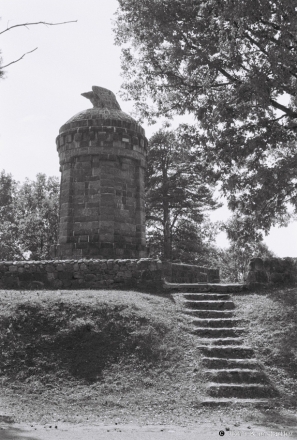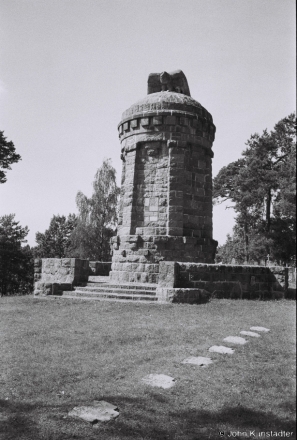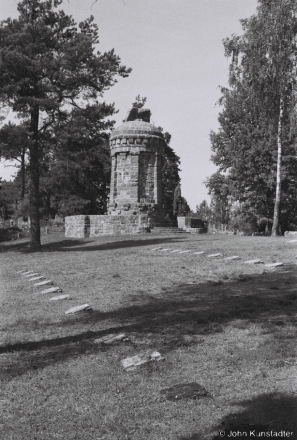Photo expedition to Valozhyn District 2019: Padbjarez’, Dzjasjatniki (Dzjesjatniki), Al’shanka, Vishnjeva, Kiby, Adamova, Zhomajdz’, Ts’viroushchyna, Filipinjaty.
Фотавандроўка па Валожынскім раёне 2019 г.: Падбярэзь, Дзясятнікі (Дзесятнікі), Альшанка, Вішнева, Кібы, Адамова, Жомайдзь, Цьвіроўшчына, Філіпіняты.
World War I cemeteries (part XXX): German cemetery in Dzjasjatniki (Dzjesjatniki) I/III. See also photos of the day for December 1, 2015.
From 1915-1917 the World War I Eastern Front cut a static northeast to southwest line across Belarusian lands. During that time the German forces set up perhaps as many as 300 military cemeteries along this section of the front; more than 150 of these cemeteries remain whole or easily traceable.
After World War I the German War Graves Commission (Volksbund Deutsche Kriegsgräberfürsorge — “Volksbund”) paid the government of the Second Polish Republic to look after German war cemeteries on Polish territory. Between 1921 and the Nazi-Soviet invasion of September 1939 Polish territory included the western Belarusian lands. The Poles undertook careful exhumations and where necessary reburied soldiers’ remains under new concrete crosses or tombstones. In many cases, as here in Dzjasjatniki, cemeteries contained remains of soldiers from the Russian imperial army; the Poles treated those remains with equal respect.
In stark contrast, at no time did the Soviet regime showed interest in honoring Russian imperial army graves in territories under Soviet occupation. After occupying the western Belarusian lands when it invaded Poland in September 1939 together with Nazi Germany and again after driving the Germans out in 1944, the Soviet regime neglected all World War I cemeteries. Some local Belarusian authorities continue to allow depredation of German World War I cemeteries, for instance in Bartashy (Shchuchyn District) in 2018.
Since the collapse of the Soviet empire, the Volksbund has helped Belarusian volunteers and local historians put some of the German World War I cemeteries in Belarus in order, as here.
With its eagle-topped monument, the cemetery in Dzjasjatniki is one of the most well-known, and best-tended, German World War I cemeteries in Belarus. According to the Volksbund site (https://kriegsgraeberstaetten.volksbund.de/liste/desjatniki) the cemetery contains the remains of about 3,500 soldiers.
Могілкі Першай сусьветнай вайны (частка XXX): нямецкыя могілкі ў в. Дзясятнікі (Дзесятнікі) I/III. Гл. таксама фотаздымкі дня 01.12.2015 г.


